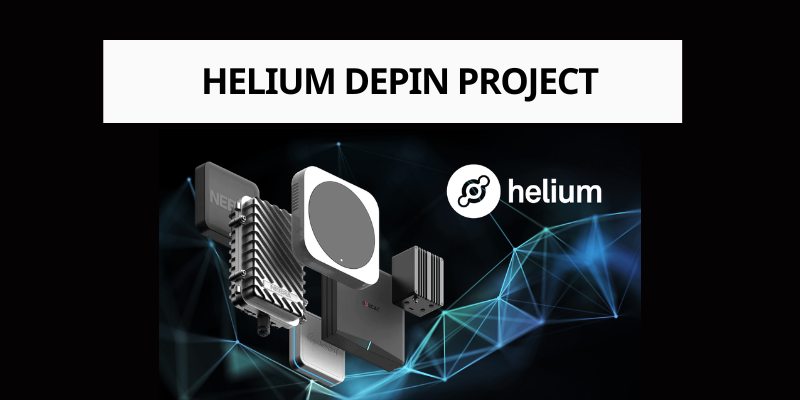Helium DePIN Project – The Future of Decentralized Infrastructure
The Helium DePIN Project stands as a trailblazer in the world of decentralized physical infrastructure networks (DePIN), revolutionizing how wireless connectivity is delivered globally. Launched in 2019, Helium has grown into the largest community-owned wireless network, empowering individuals to contribute to a decentralized ecosystem while earning rewards in HNT tokens.
Contents
What Is the Helium DePIN Project?
The Helium DePIN Project, often simply referred to as the Helium Network, is a decentralized wireless infrastructure platform designed to connect Internet of Things (IoT) devices, 5G mobile networks, and emerging applications like energy monitoring. Founded by Amir Haleem, Shawn Fanning, and Sean Carey, Helium leverages blockchain technology to incentivize users to deploy Hotspots—hardware devices that provide wireless coverage—and build a global network without relying on traditional telecom giants.
Since migrating to the Solana blockchain in April 2023, the Helium DePIN Project has scaled its operations, boasting over 335,000 IoT Hotspots and 24,800 Mobile Hotspots across 190 countries by early 2025. This decentralized infrastructure model, known as DePIN, positions Helium as a leader in a market projected to exceed $32 billion in capitalization by late 2024, according to CoinGecko.

Why Helium Matters in the DePIN Ecosystem?
DePIN, or Decentralized Physical Infrastructure Network, refers to systems that use blockchain to manage real-world infrastructure—like wireless networks, storage, or computing power—in a distributed manner. The Helium DePIN Project exemplifies this concept by enabling anyone to participate in creating a robust, cost-effective alternative to centralized telecom services. Its applications range from IoT connectivity (e.g., smart sensors) to affordable 5G coverage through Helium Mobile, making it a cornerstone of the DePIN revolution.
How the Helium DePIN Project Works
At its core, the Helium Network operates on a unique Proof-of-Coverage (PoC) mechanism. This system verifies that Hotspots are genuinely providing wireless coverage, rewarding operators with HNT tokens based on two key activities:
Coverage Provision: Hotspots earn HNT by extending wireless reach to underserved areas.
Data Transfer: Hotspots facilitating data transmission for IoT devices or 5G users receive additional rewards.
The Role of HNT Token
The HNT token is the native cryptocurrency of the Helium DePIN Project, with a capped supply of 223 million coins and a halving mechanism akin to Bitcoin. Its Burn-and-Mint Equilibrium (BME) model ensures economic stability:
- HNT is burned to generate Data Credits, a stable-value unit used to pay for data transmission.
- Rewards are split between subnetworks: 70% for MOBILE (5G) and 30% for IOT.
- This tokenomics structure supports the network’s growth while maintaining incentives for Hotspot operators.
Helium Mobile: A 5G Breakthrough
A standout feature of the Helium DePIN Project is Helium Mobile, the world’s first decentralized mobile service. Launched by Nova Labs, it offers unlimited plans for as low as $20/month in the U.S., blending community-deployed 5G Hotspots with partnerships like T-Mobile. By Q1 2025, Helium Mobile had attracted over 150,000 subscribers, a ninefold increase from the previous year, highlighting its disruptive potential in telecom.

Key Achievements and Partnerships
The Helium DePIN Project has achieved remarkable milestones:
Network Scale: Over 576 TB of data transferred in Q4 2024, a 555% surge, per Messari’s report.
Global Reach: Coverage spans 190 countries, driven by community participation.
Strategic Collaborations:
- Telefónica: 5G deployment in Mexico City and Oaxaca.
- Ameriband: Integration of 100,000+ data-only Hotspots in the U.S.
- MNTD/RAK Wireless: New Hotspot hardware for IoT and 5G networks.
Additionally, Harvard Business School added Helium Mobile to its curriculum in late 2024, underscoring its real-world significance.
Helium v3: Expanding the Vision
In September 2024, the Helium DePIN Project unveiled Helium v3, introducing the Helium Network Extension. This ambitious upgrade allows other DePIN projects—like Hivemapper (mapping) and DIMO (vehicle data)—to leverage Helium’s wireless infrastructure, transforming it into a “platform of platforms.” This vision reinforces Helium’s role as a foundational layer for the broader DePIN ecosystem.
How to Participate in the Helium DePIN Project
Ready to join the Helium Network? Here’s a quick guide:
- Buy a Hotspot: Purchase from vendors like Helium Deploy or RAK Wireless.
- Set Up: Position your Hotspot in a high, unobstructed location for optimal coverage.
- Connect a Wallet: Use a Solana-com patible wallet (e.g., Phantom) to claim HNT rewards.
- Optimize: Check Hotspot density via Helium Explorer to avoid oversaturation.
The Helium DePIN Project is more than a blockchain experiment—it’s a real-world solution redefining connectivity. With its expansive network, innovative tokenomics, and forward-thinking Helium v3 vision, Helium is poised to lead the DePIN revolution. Whether you’re an IoT enthusiast, a 5G user, or a crypto investor, this project offers tangible benefits and exciting opportunities.